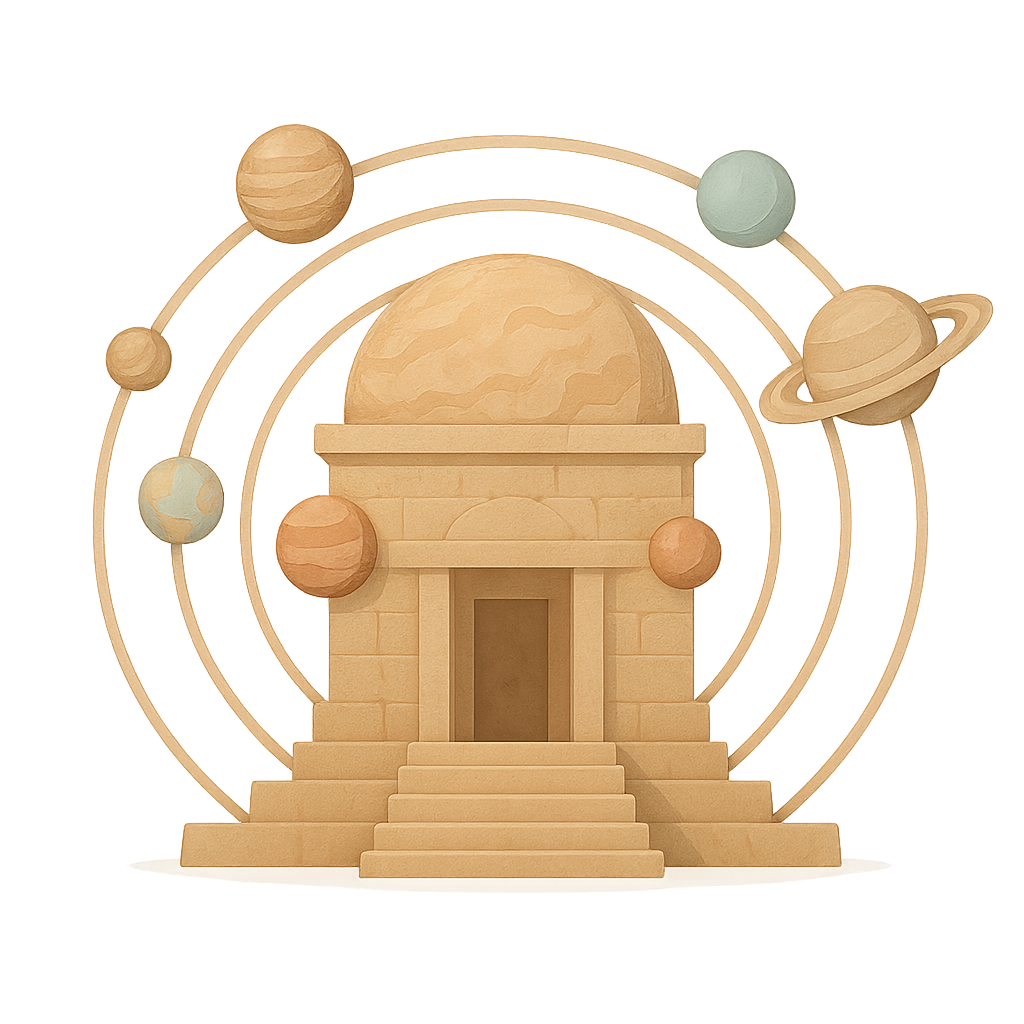A Story of Stardust and Wonder
I am a swirling dance of light and shadow, a vast darkness sprinkled with stardust. In my center burns a heart of pure fire, a magnificent star that warms everything in its embrace. Around this blazing heart, a family of worlds spins in a silent, graceful ballet. Some are small, rocky, and baked by the intense heat, while others are giants of swirling gas, decorated with furious storms and shimmering rings of ice and dust. Farther out, lonely blue and green spheres of ice drift through the cold. And among them all is one special, precious world, a blue marble teeming with water, life, and curious minds that look up and wonder about me. For billions of years, those minds have tried to map my corners and understand my secrets. I am the cosmic neighborhood you call home. I am your Solar System.
My story began a very, very long time ago, around 4.6 billion years ago, long before any life existed on that blue marble. I wasn’t a collection of planets then. I was just a dream, a vast, cold, and spinning cloud of gas and dust called a nebula. For millions of years, this cloud drifted peacefully. But a powerful force, gravity, began to work its magic. It gently but persistently pulled the dust and gas inward, tighter and tighter. As the material rushed toward the center, it began to spin faster and heat up, creating a glowing, super-hot ball of gas. In the year zero of my existence, the pressure and heat became so immense that a spectacular event happened: the core ignited in a brilliant flash of nuclear fusion, and my star, the Sun, was born.
The birth of my Sun was the grand beginning, but the rest of my family was still just a collection of leftover dust and rock circling it. Over the next hundred million years, gravity continued its work. Tiny grains of dust stuck together, forming pebbles. Pebbles collided to become rocks, and rocks crashed together to become boulders, growing larger and larger in a process called accretion. These growing clumps of matter became the seeds of planets, sweeping their paths clean of debris. The four closest to the Sun became rocky worlds: Mercury, Venus, Earth, and Mars. Farther out, where it was colder, giant worlds of gas and ice formed: Jupiter, Saturn, Uranus, and Neptune. Each one settled into its own unique, stable path, an orbit, destined to circle the Sun for billions of years to come.
For most of human history, the people on Earth looked up and believed they were the center of everything. They saw my Sun, my Moon, and my planets as wandering lights that revolved around them. It was a beautiful idea, but it wasn’t the full story. The truth began to unfold thanks to a few brilliant and brave thinkers. In 1543, a Polish astronomer named Nicolaus Copernicus published a book that suggested a radical new idea: what if the Sun was my true center, and Earth was just another planet orbiting it? His idea was revolutionary and took a long time to be accepted. He had started a great scientific journey.
Following Copernicus, a German mathematician named Johannes Kepler dedicated his life to understanding the precise movements of my planets. He discovered that they didn't travel in perfect circles, as everyone had assumed, but in slightly stretched-out ovals called ellipses. He figured out the elegant mathematical laws that governed their speeds and paths, revealing the hidden rhythm of my cosmic dance. Then, around the year 1610, an Italian scientist named Galileo Galilei did something no one had done before with such purpose. He built a powerful telescope and pointed it toward the heavens. What he saw changed everything forever.
Through his lens, Galileo saw that Jupiter had four tiny moons orbiting it, proving that not everything circled the Earth. He saw the rugged mountains and craters on the Moon, showing it was a world of its own, not a perfect, smooth orb. He even saw the strange and beautiful rings of Saturn. His observations provided powerful, visible evidence that Copernicus was right. I was not an Earth-centered system; I was a Sun-centered one, far more complex and wonderful than anyone had ever imagined. These discoveries opened humanity’s eyes, and they began to see me not as a collection of mysterious lights, but as a family of worlds waiting to be explored.
In the last century, humanity didn't just look at me through telescopes; they began to visit. It started with robotic ambassadors, brave machines sent to explore where humans could not yet go. In 1977, two remarkable probes, Voyager 1 and Voyager 2, were launched on a grand tour of my outer planets. They flew past Jupiter and Saturn, sending back the first close-up, breathtaking images of their swirling clouds and intricate rings. They continued on to greet the mysterious ice giants, Uranus and Neptune, before sailing out of my embrace and into the vastness of interstellar space, carrying messages from Earth with them.
Today, your curiosity continues to explore my corners. Clever rovers, like Perseverance on Mars, crawl across the red dust, analyzing rocks and searching for clues of ancient life, asking if Earth is the only world to have ever hosted it. Every new picture from a space telescope and every piece of data from a probe reveals more of my secrets. I watch with pride as new generations of scientists, engineers, and dreamers look up, inspired by the same stars that guided Copernicus and Galileo. I am still full of mysteries, a reminder that there is always more to discover. You are a part of me, and I am a part of you—one cosmic family, bound together by gravity and wonder.
Reading Comprehension Questions
Click to see answer
